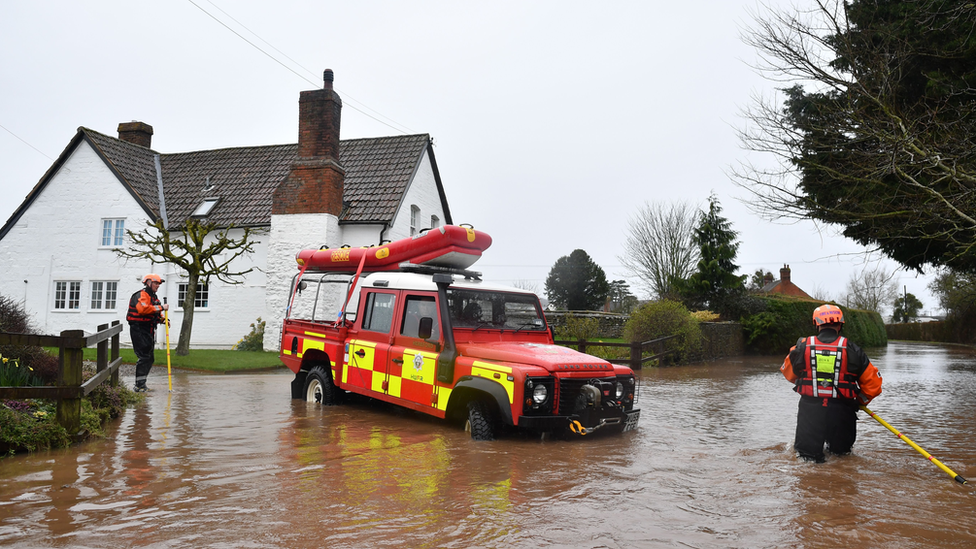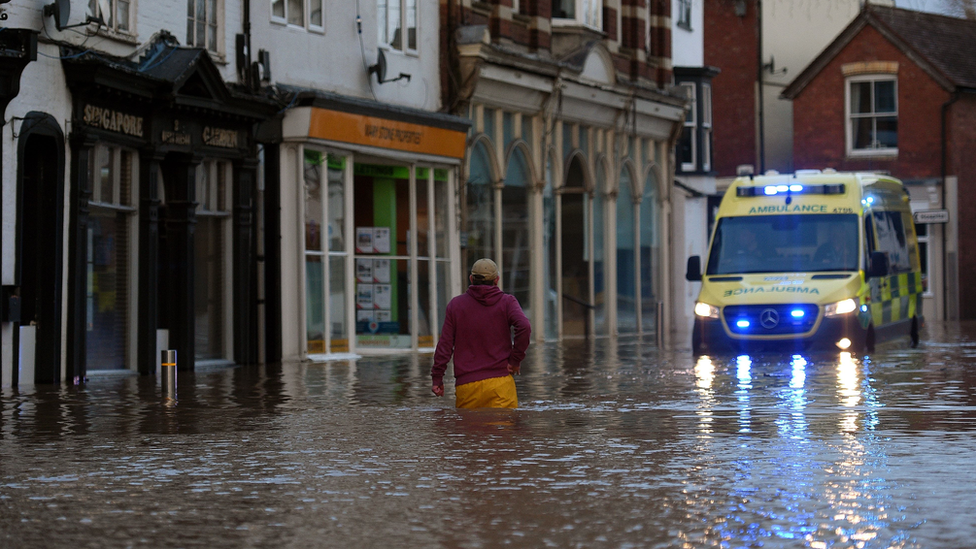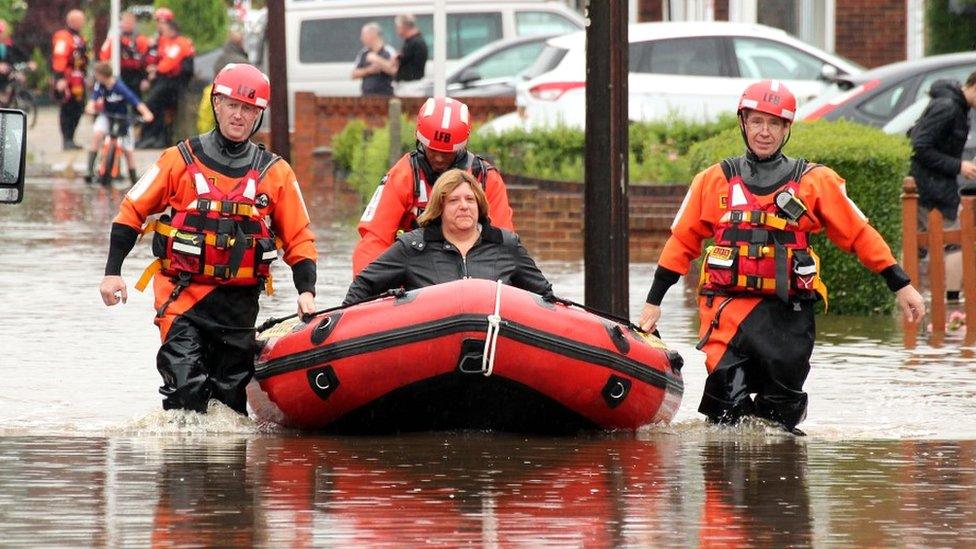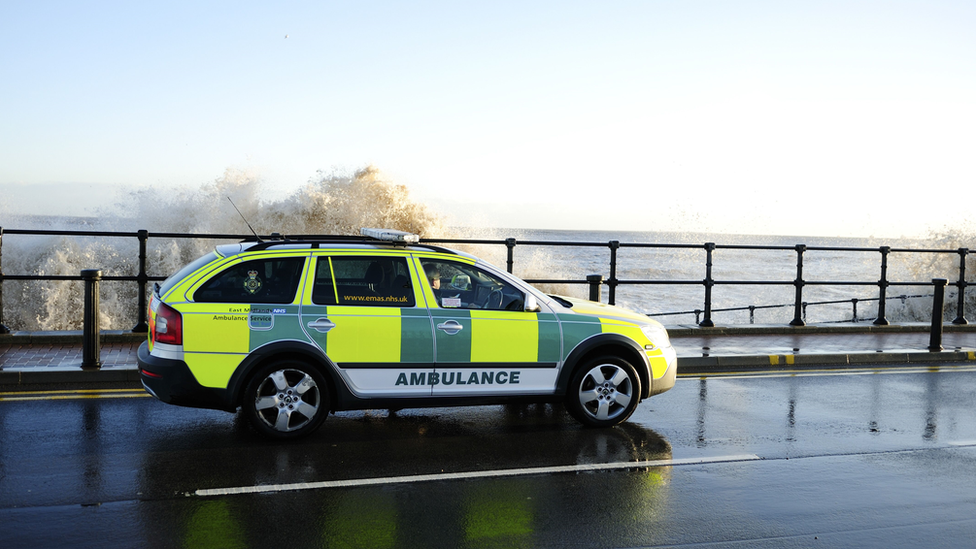Climate change: Future floods will delay emergency response
- Published

Future increases in rainfall in England could significantly impact emergency responses, according to a new study.
Researchers say, external that flood conditions could see just 9% of some rural populations reached by an ambulance within the 7-15 minute mandatory timeframe.
Older people living in rural areas would be worst affected, the authors say.
They say there should be a rethink on ambulance locations in flooding events.
Flooding is one of the most devastating impacts of climate change. According to studies, it is likely to increase in the future.
The Met Office has indicated, external that an extended period of extreme rainfall in winter, similar to what was seen in parts of England between 2013 and 2014 is now about seven times more likely because of human-induced climate change.

To find out how this changing rainfall might impact on ambulance and fire and rescue services, researchers projected the impacts of floods that might occur once in 30 years, once in 100 years and once in 1,000 years.
In England, emergency responders must reach urgent cases within mandatory timeframes, regardless of the weather conditions.
In normal conditions, around 84% of England's population can be reached by ambulance in around seven minutes.
The researchers found that when a once in 30-year flood event struck, this dropped to 67%.
With a once in a 100-year flood, just over half the population would be reachable in seven minutes, while in a once in a 1,000-year flood, only 27% of the total population would see an ambulance inside that time limit.
Different locations had different outcomes according to the study. East Riding and Berkshire would see their coverage reduce to 9% and 12% respectively.
"Even the small magnitude floods affect the emergency response," said lead author Prof Dapeng Yu from Loughborough University.
"Ambulance services have been centralised in recent decades, so in villages or small towns there's no ambulance service, therefore when an incident happens in rural areas, it takes a lot longer for them to reach."
As well as rural areas, large urban centres including London, Birmingham, Liverpool and Newcastle, would also see a reduction in response time under a 30-year flood.
Care homes, sheltered accommodation, nurseries and schools would be among the most vulnerable locations with older people in rural areas likely worst-hit, according to the study.
Real world impacts
The authors say that the day of the Brexit referendum on 23 June in 2016 is a good example of what can happen to the emergency services during surface flooding events.
Referendum day was memorable for large-scale surface flooding in many parts of London after torrential rain.

Fire brigade crews had to rescue Barking residents by boat
Around 450 flooding incidents were attended by the London Fire and Rescue Service, which was three times the number from the previous day.
The London fire service target timeframe for reaching incidents is six minutes and on June 23, 59% of journeys were outside that target.
"You don't know when it's going to hit and you don't know how hard it is going to hit," said Prof Dapeng Yu.
"But when it happens, like in London during the referendum day, it is really striking."
"It really shows the impacts, you will receive three times more calls than normal and your ability to reach them in six minutes is massively compromised."
The authors say that their study shows that the emergency services are particularly sensitive to the expected impacts of future increases in rainfall.
The impacts would be greater with surface flooding events rather than with river or coastal flooding.

Preventing unnecessary delays in the future will require planners to identify hotspots of vulnerability and to re-think the distribution of ambulances and fire stations.
"With climate change, flooding will likely become more frequent and more intense,"said Prof Dapeng Yu.
"So certainly, when the authorities consider the strategic plan for new ambulance stations or fire stations, they need to consider this factor."
The study has been published, external in the journal Nature Sustainability.
Follow Matt on Twitter., external